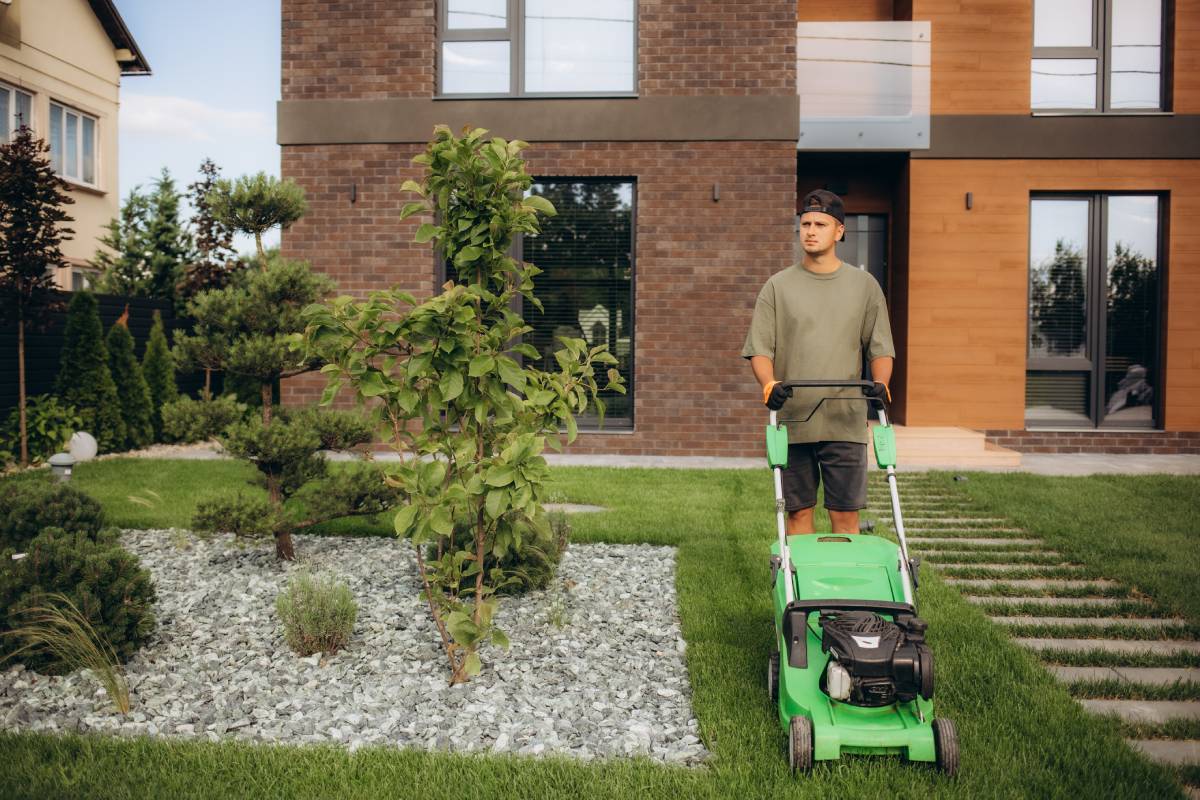A lush well maintained lawn can enhance the beauty of any home, offering a welcoming environment and a sense of tranquility. However achieving that perfect lawn requires more than just occasional mowing.
The way you mow your grass plays a crucial role in its overall health appearance and growth. From choosing the right cutting height to determining the best time to mow every step matters.
This article provides proper mowing techniques, answering common questions like whether to mow wet or dry grass and the best time of day. By following these tips, you’ll create a beautiful, long-lasting lawn.
How to Mow Grass Properly
Mowing grass may seem like a simple task, but there are several factors to consider for optimal results.
Following the right techniques ensures your grass remains healthy and continues to grow lush.
Set the Correct Mowing Height
Mowing at the right height is key to grass health. Cutting too short stresses the grass while leaving it too long encourages weeds. Mow to 2.5-3.5 inches adjusting for grass type cool season grasses should be longer and warm season grasses shorter.
Avoid Cutting More Than One Third of the Grass Blade
A golden rule in lawn care is to never cut more than one third of the grass blade’s length at once. Cutting too much can stress the grass and hinder its growth.
If the lawn is too long, it’s better to mow it in stages, gradually reducing the height over several sessions. This method minimizes stress and helps the grass recover properly.
Use a Sharp Blade
A sharp mower blade ensures a clean cut while a dull blade tears the grass leading to brown edges and potential disease. Regularly sharpen your blade and replace it when it’s excessively worn to keep your lawn healthy.
Mow in Different Patterns
Mowing in the same direction each time can lead to uneven growth. To encourage even growth alternate mowing directions each week such as north to south one week and east to west the next. This prevents grass compaction and promotes a more uniform lawn.
Mow When the Grass Is Dry
Mowing wet grass can cause uneven cuts clumping and mower clogging. Wet grass is also more prone to disease which can harm your lawn. To avoid these issues, wait for the grass to dry before mowing especially after watering or rain.
Is It Best to Cut Grass Wet or Dry?
In general it is always better to mow grass when it is dry. Mowing wet grass can cause several problems:
Clumping and Clogging
When the grass is wet, it tends to clump together, making it harder for the mower blades to cut evenly. This may leave behind unsightly clumps of grass on the lawn that can create an uneven appearance. Additionally, wet grass can clog the mower’s discharge chute, reducing its efficiency and potentially causing the motor to overheat.
Increased Risk of Disease
Mowing wet grass can increase the risk of spreading disease. Wet grass is more prone to fungal infections and cutting it while wet can spread these infections throughout the lawn.
Additionally mowing wet grass can leave behind moist conditions that foster the growth of mold and mildew, further harming your lawn.
Compaction and Damage
Mowing wet grass can cause soil compaction and uneven cuts. Wet soil may cause mower ruts and hinder grass rooting. To avoid mower strain and lawn damage, wait for the grass to dry fully before mowing. This ensures better results and reduces the risk of disease.
What Time of Day Should You Not Mow?
The timing of when you mow your lawn is just as important as the way you mow it. Mowing at the wrong time of day can result in damage to your lawn and poor mowing results. Here are some key considerations for the best time to mow:
Avoid Mowing During the Hottest Part of the Day
It’s best to avoid mowing during the hottest part of the day usually between 10 a.m. and 4 p.m. The intense heat can stress the grass and cause it to dry out resulting in brown patches. Additionally mowing in the heat can be physically draining increasing the risk of dehydration and exhaustion.
Morning or Late Afternoon Is Ideal
The best time to mow is early morning or late afternoon when temperatures are cooler. In the morning the grass is still moist with dew but dry enough to avoid clumping.
Late afternoon is also ideal as the grass has dried from the morning dew and mowing at this time helps the lawn recover before the heat of the next day.
Encountering certain wildlife
While caring for your lawn, you may come across wildlife like the Huntsman spider. Common in Australia these harmless spiders can sometimes enter homes. If you find one, stay calm and use a container and paper to safely relocate it outside avoiding harsh chemicals or squashing it.
Conclusion
Mowing your lawn properly is an essential part of lawn care that promotes healthy grass and a beautiful landscape. By setting the correct mowing height, avoiding cutting too much grass at once, using a sharp mower blade and mowing in different patterns you can achieve a professional looking lawn.
Additionally it’s important to mow when the grass is dry avoid mowing during the hottest part of the day and keep an eye on the timing for optimal results.
By following these tips, you’ll maintain a well kept and healthy lawn that will be the envy of your neighbors. With regular, thoughtful care, your lawn will thrive for years to come.




